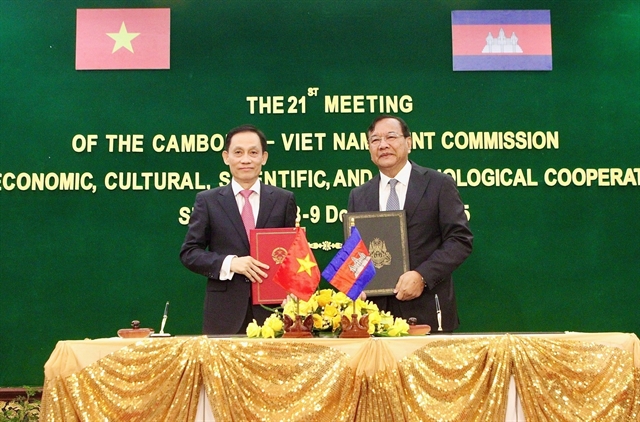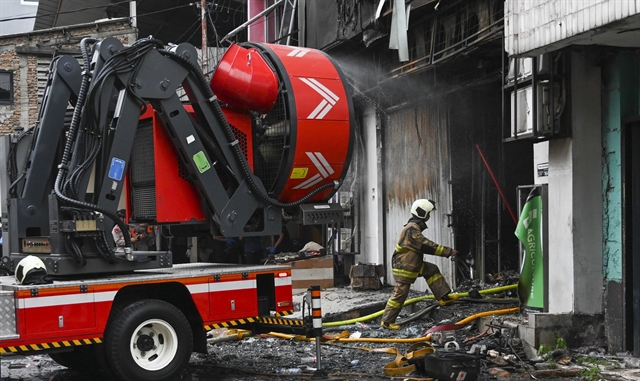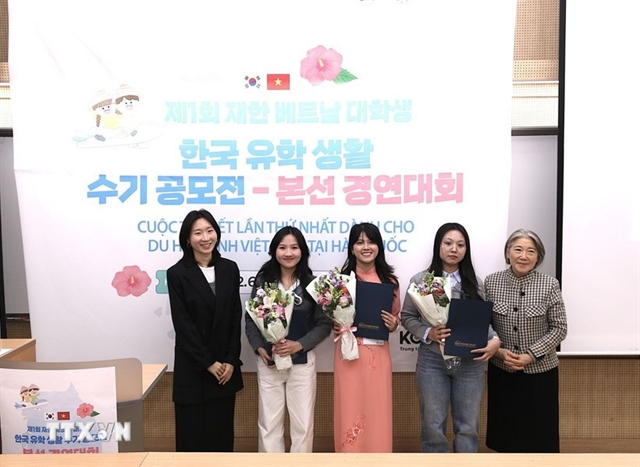 Life & Style
Life & Style
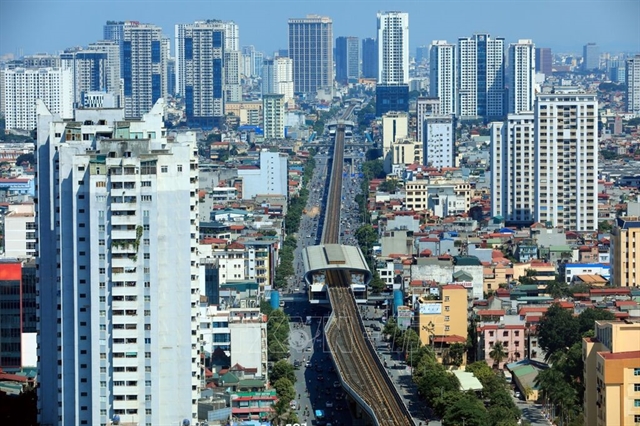
Northern province's pagodas and temples offer spiritual and aesthetic rewards
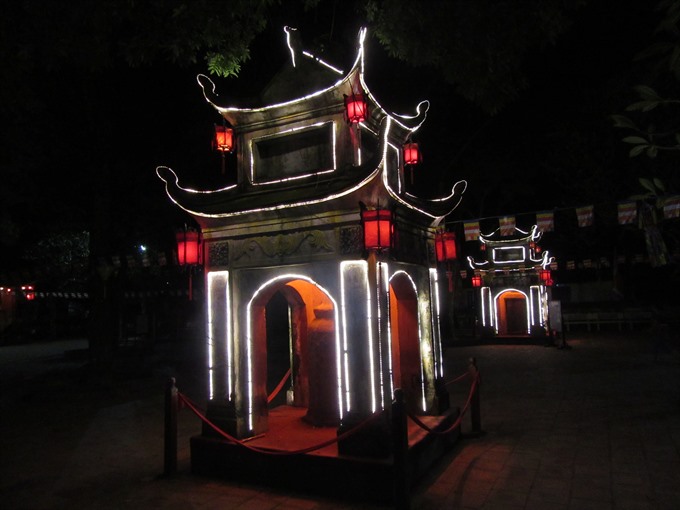 |
| Lit up: Côn Sơn Pagoda at night. — VNS Photo Bạch Liên |
Bạch Liên
For a long, long time, the very mention of Hải Dương has conjured up in most Vietnamese minds images of luscious clusters of lychee and stacks of delicious powdery mung bean cake said to be a perfect accompaniment to green tea.
Therefore, it is less known that the northern province, in particular its eponymous capital city, is also home to numerous ancient pagodas and temples set in picturesque landscapes, offering not just a tranquil getaway from the nation’s capital, but also a rewarding spiritual and aesthetic experience.
To sample this, let’s just take a tour of pagodas and temples in Hải Dương City’s Chí Linh District.
Just 60km away from downtown Hà Nội, the district is easily accessed by all forms of road transport including motorbikes.
We can start the day with a quick visit to Thanh Mai Pagoda in Hoàng Hoa Thám Commune, which stands amidst a forest of old maple trees.
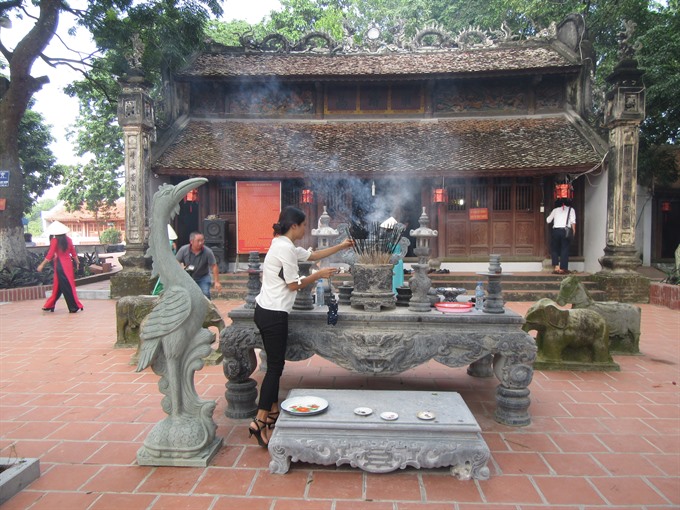 |
| Offering incense: A devotee at Cao Temple in Chí Linh District, Hải Dương City. — VNS Photo Bạch Liên |
The ancient pagoda was built on a side of the Tam Ban Mountain around the year 1329, during the reign of the Trần Dynasty. It was later enlarged by Zen Monk Pháp Loa, the Second Patriarch of Trúc Lâm Zen.
The pagoda is located halfway up the mountain and hidden in the middle of the ancient maple forest. The site attracts visitors in all seasons of the year, but mostly in autumn, when the maple leaves turn red and yellow.
The ancient pagoda is one of three ancestral places of Trúc Lâm Zen. In 1992, it was recognized as a national heritage.
About 10km from Thanh Mai Pagoda, Cao Temple in An Lac Commune attracts visitors with a beautiful legend about five children of the Vương family who were very good at working out plans to defeat the nation’s enemies. They helped King Lê Đại Hành defeat the Song invaders from China in 981 and keep the country’s border peaceful. All the five sons and daughters of the Vương family were honoured as “the best geniuses”.
The temple is also famous for its 54 ironwood trees, which are nearly 1,000 years old and recognised by the Association for Protection of Nature and Environment of Viet Nam as “national heritage trees” in 2011.
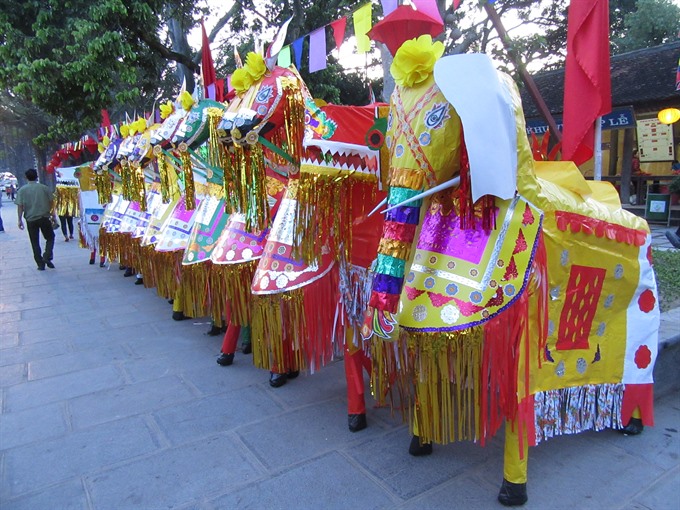 |
| Galloping to heaven: Paper horses readied for a festival at Kiếp Bạc Temple. — VNS Photo Bạch Liên |
A short drive away from the temple will take you to Vạn Kiếp Commune, where Kiếp Bạc Temple commemorates General Trần Hưng Đạo’s victories over northern foreign invaders in the 13th century.
Nestled in a small valley surrounded by splendid scenery, the temple with its unique architectural style is a great place to explore Vietnamese culture and learn about the country’s glorious victories against foreign invaders.
After his first battle against the Yuan-Mongol invaders in 1258, General Trần Hưng Đạo based his Command Headquarters here, in Vạn Kiếp, and continued to fight off the Yuan-Mongols who attempted twice again to invade Việt Nam from the northeast, in 1285 and 1288. After his death, locals built a temple dedicated to Trần Hưng Đạo, showing their gratitude for his great contributions to the nation. They also honoured him as a Saint.
“While there are thousands of temples dedicated to Gen Trần Hưng Đạo, this land, Vạn Kiếp, is closely associated with his life and career as it was his military headquarters and the place where he lived his whole life. So, the temple is considered particularly holy," said Nguyễn Thùy Liên, deputy head of the Côn Sơn Kiếp Bạc Relic Management Board.
The Kiếp Bạc Temple festival, held from the 15th to the 20th of the 8th lunar month, marks the death anniversary of national hero Trần Hưng Đạo. The festival features rituals dedicated to the hero, processions, a prayer ceremony for peace, a festival of floating lanterns on the Lục Đầu River, trance ritual performances, and folk games.
On that day, fishermen from around Việt Nam participate in a boat race to pray to Saint Trần for favourable weather and a bumper catch. Following the ceremony, there are cooking competitions, boat races, wrestling matches, and folk song concerts.
 |
| Bright lights: Côn Sơn pagoda at night. — VNS Photo Bạch Liên |
A few steps away from Kiếp Bạc Temple stands Côn Sơn Pagoda, a perfect place to finish your tour as the sun sets and the moon rises. Contemplating the pagoda decorated with lanterns and lights is a memorable experience.
The pagoda, built in the 10th century and expanded in the 13th century during the reign of the Trần Dynasty, is located at the foot of the Côn Sơn Mountain .
In its ancestors worshiping hall, there are statues of King-Monk Trần Nhân Tông, Venerable Monk Pháp Loan, second founder of Trúc Lâm Zen sect and his successor Huyền Quang, high-ranking mandarin Trần Nguyên Đán and national hero Nguyễn Trãi.
Côn Sơn Pagoda embodies the royal architectural style, distinguished by a half-moon lake and a three-door temple gate at the front. A path lined with ancient pine and lychee trees leads to the bell tower before reaching the main sanctuary.
When you are here, make sure you visit the newly restored nine-storeyed lotus tower in the pagoda. It is believed as that if you circumambulate the tower as you pray, your prayers will be delivered to heaven. — VNS

